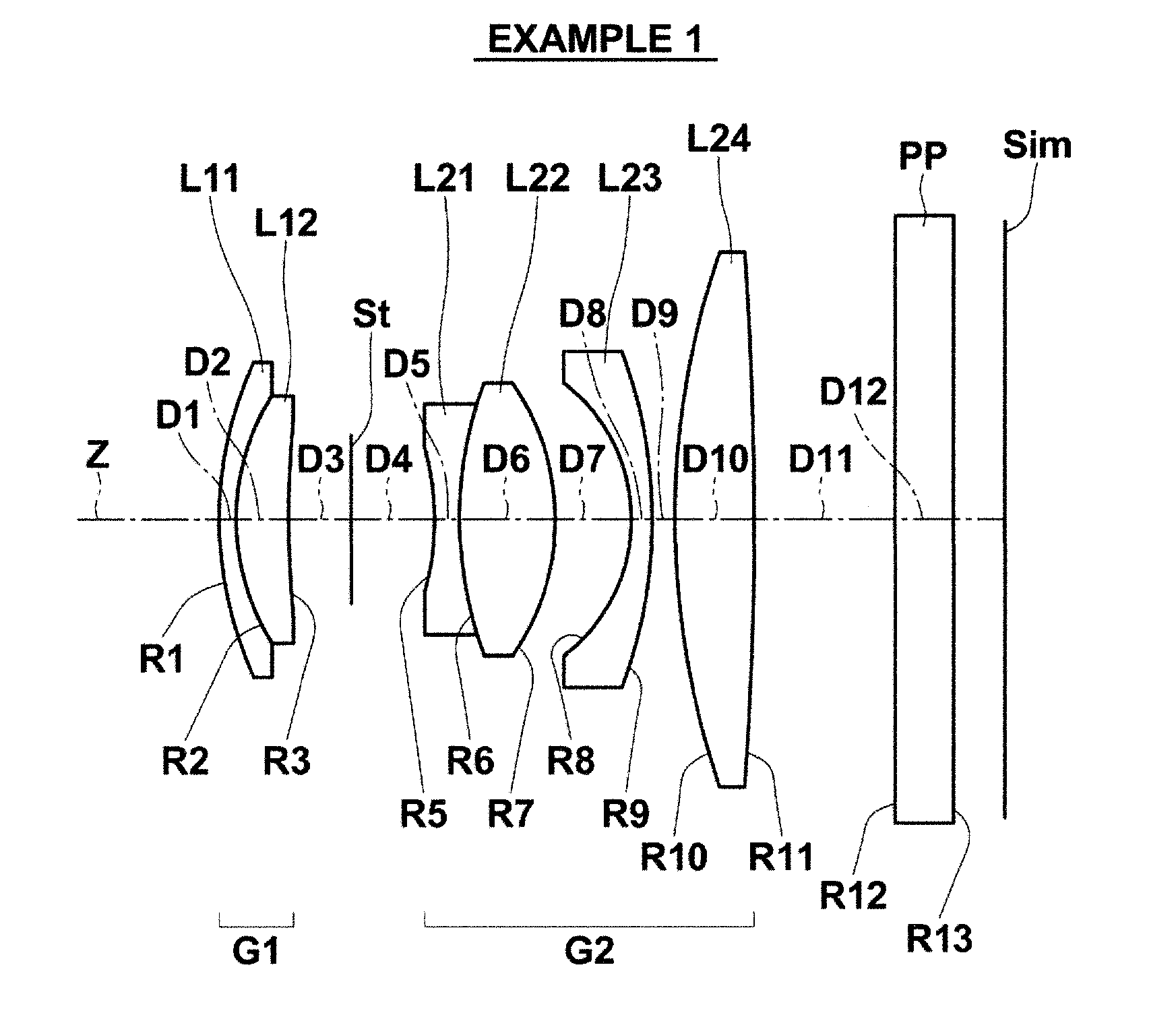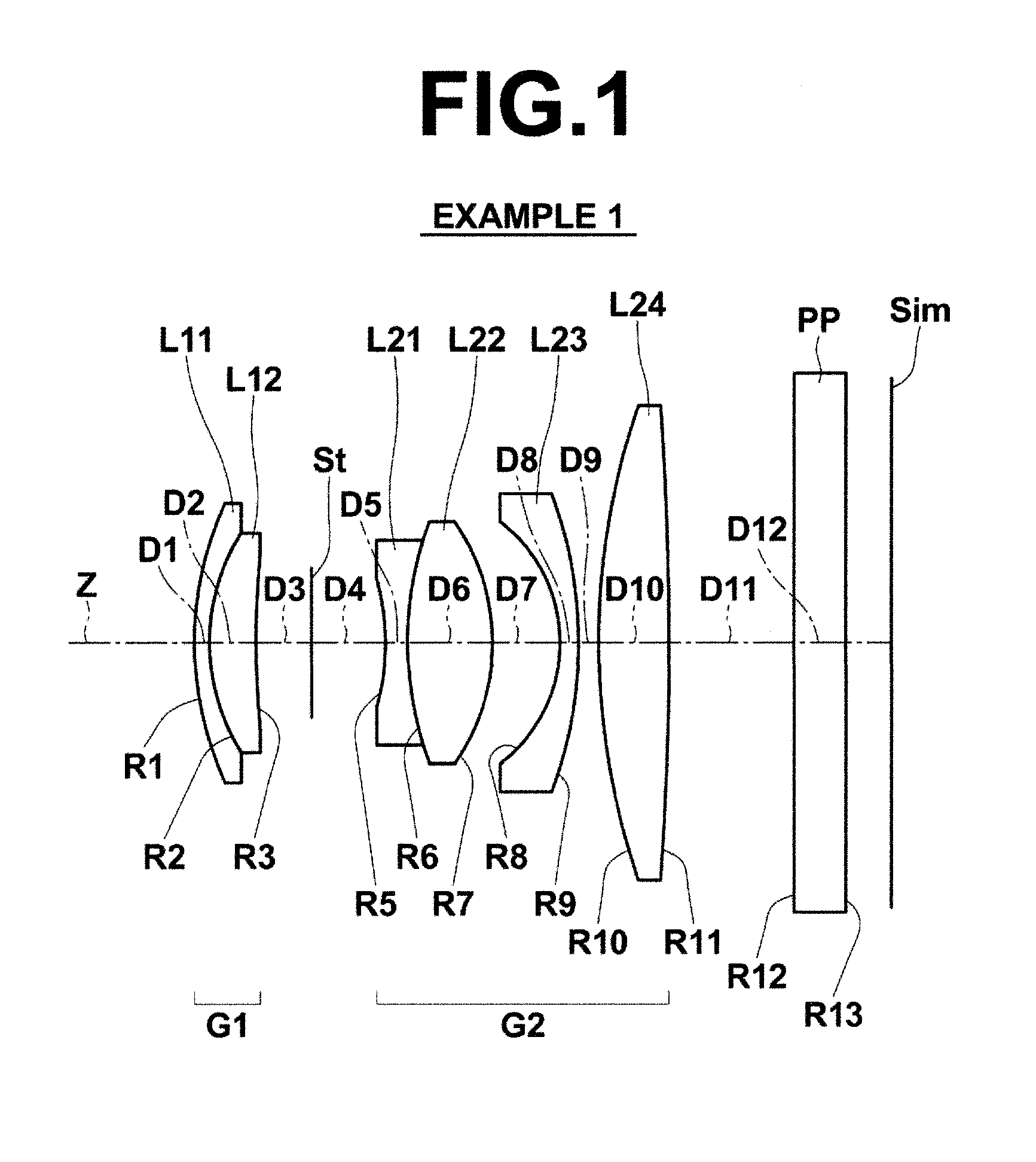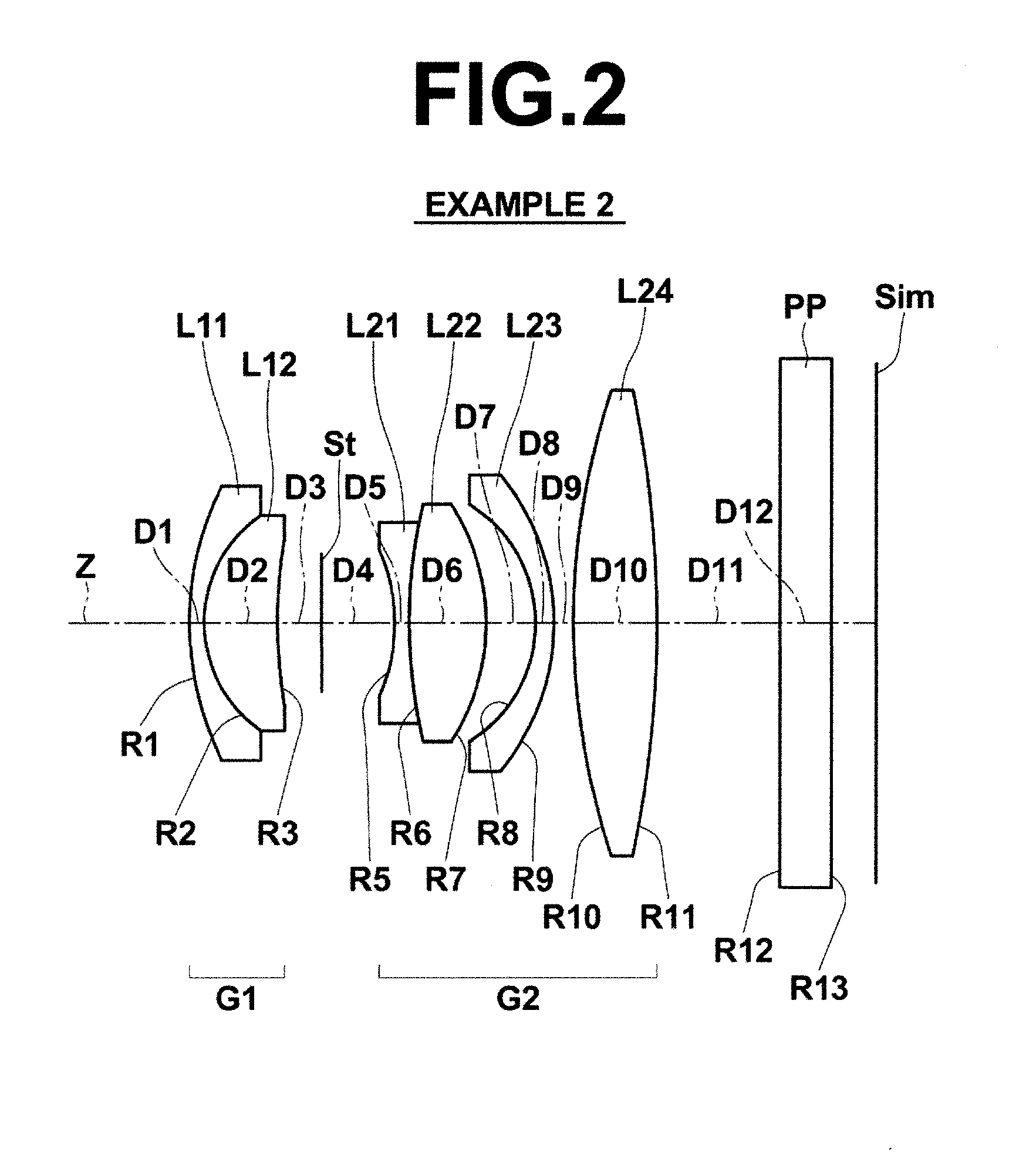Imaging lens and imaging apparatus
a technology of imaging lens and imaging apparatus, which is applied in the field of imaging lens, can solve the problems of inevitably long optical total length of such type of imaging lens, and achieve the effects of reducing the size of imaging lens, excellently correcting chromatic aberration, and suppressing the exit angle of peripheral rays
- Summary
- Abstract
- Description
- Claims
- Application Information
AI Technical Summary
Benefits of technology
Problems solved by technology
Method used
Image
Examples
example 1
[0125]FIG. 1 is a diagram illustrating the arrangement of lens groups in an imaging lens of Example 1. Since the lens groups and each lens in the structure of FIG. 1 were described in detail already, explanations will not be repeated in the following descriptions, unless especially necessary.
[0126]Table 1 shows basic lens data on the imaging lens of Example 1. Here, data including optical member PP are shown. In Table 1, column Si shows the surface number of the i-th surface (i=1, 2, 3, . . . ). The object-side surface of a composition element located closest to the object side is the first surface, and surface numbers are assigned to composition elements in such a manner to sequentially increase toward the image side. Column Ri shows the curvature radius of the i-th surface, and column Di shows a distance on optical axis Z between the i-th surface and the (i+1)th surface. Column Ndj shows the refractive index of the j-th composition element (j=1, 2, 3, . . . ) for d-line (wavelengt...
example 2
[0131]FIG. 2 is a diagram illustrating the arrangement of lens groups in the imaging lens of Example 2. Table 2 shows basic lens data on the imaging lens of Example 2. FIG. 9, Sections A through D are aberration diagrams of the imaging lens of Example 2.
TABLE 2EXAMPLE 2• BASIC LENS DATARiNdjSi(CURVA-Di(REFRAC-ν dj(SURFACETURE(SURFACETIVE(ABBENUMBER)RADIUS)DISTANCE)INDEX)NUMBER)116.80640.811.68893131.0727.17454.001.88299740.76328.80451.694∞(STOP)4.005−9.74550.811.84666023.78628.71514.201.90365831.327−12.02272.708−7.64151.001.62299258.169−12.64681.061040.13684.601.71299553.8711−61.25061.6912∞2.801.55000055.0013∞f = 28.803FNo. = 2.88
example 3
[0132]FIG. 3 is a diagram illustrating the arrangement of lens groups in the imaging lens of Example 3. Table 3 shows basic lens data on the imaging lens of Example 3. Further, in the lens data of Table 3, the mark of “*” is attached to the surface number of an aspherical surface, and the numerical value of a paraxial curvature radius is shown, as the curvature radius of the aspherical surface.
[0133]Table 4 shows aspherical surface data on the imaging lens of Example 3. Here, the aspherical surface data show the surface number of an aspherical surface and aspherical surface coefficients about the aspherical surface. Here, the numerical value of “E−n” (n: integer) of the aspherical surface coefficient means “×10−n”. The aspherical surface coefficients are values of coefficients KA, Am (m=3, 4, 5, . . . 10) in the following aspherical equation:
zd=C·h2 / {1+(1−KA·C2·h2)1 / 2}+ΣAm·hm, where
[0134]Zd: depth of an aspherical surface (the length of a perpendicular from a point on the aspherical...
PUM
 Login to View More
Login to View More Abstract
Description
Claims
Application Information
 Login to View More
Login to View More - R&D
- Intellectual Property
- Life Sciences
- Materials
- Tech Scout
- Unparalleled Data Quality
- Higher Quality Content
- 60% Fewer Hallucinations
Browse by: Latest US Patents, China's latest patents, Technical Efficacy Thesaurus, Application Domain, Technology Topic, Popular Technical Reports.
© 2025 PatSnap. All rights reserved.Legal|Privacy policy|Modern Slavery Act Transparency Statement|Sitemap|About US| Contact US: help@patsnap.com



